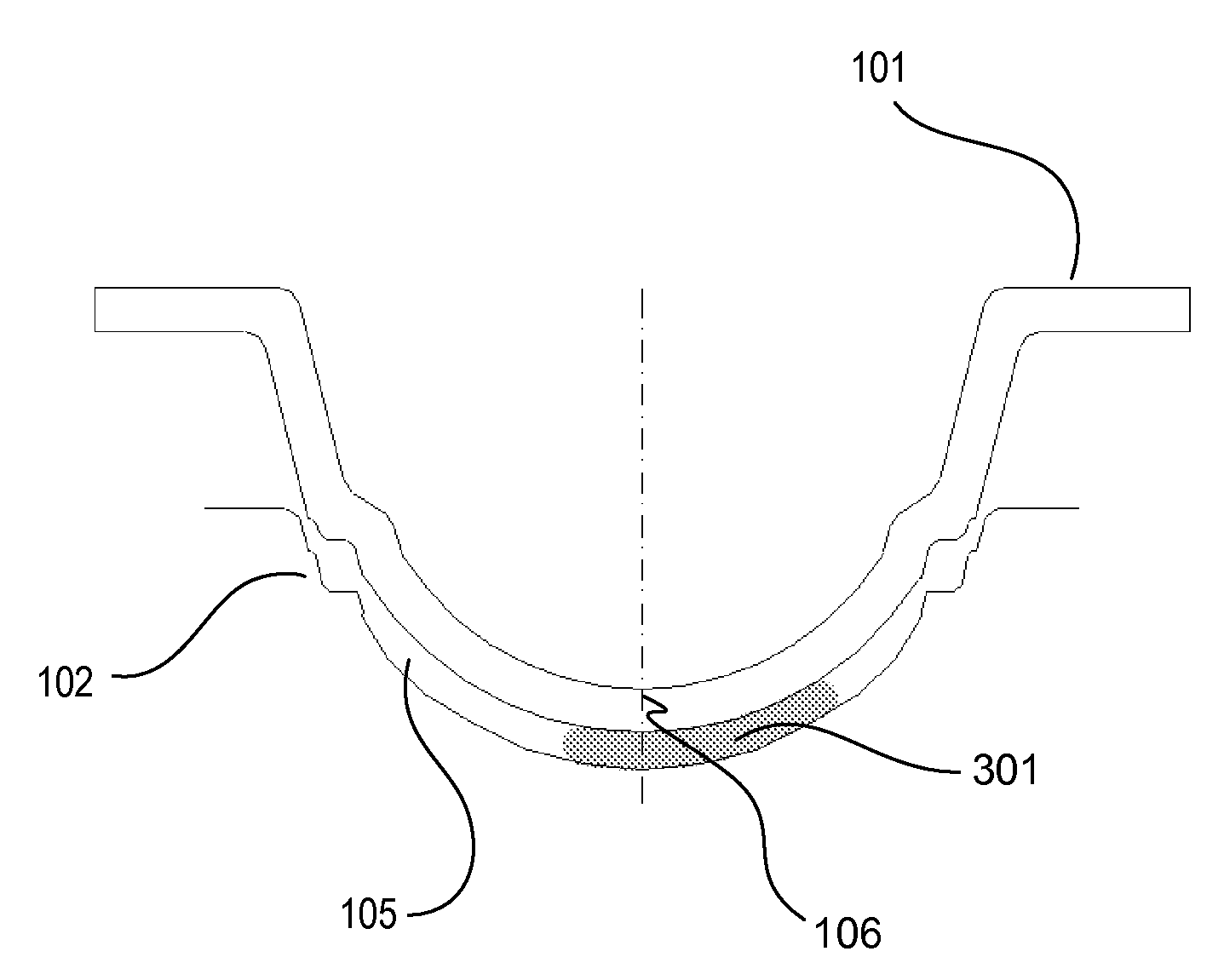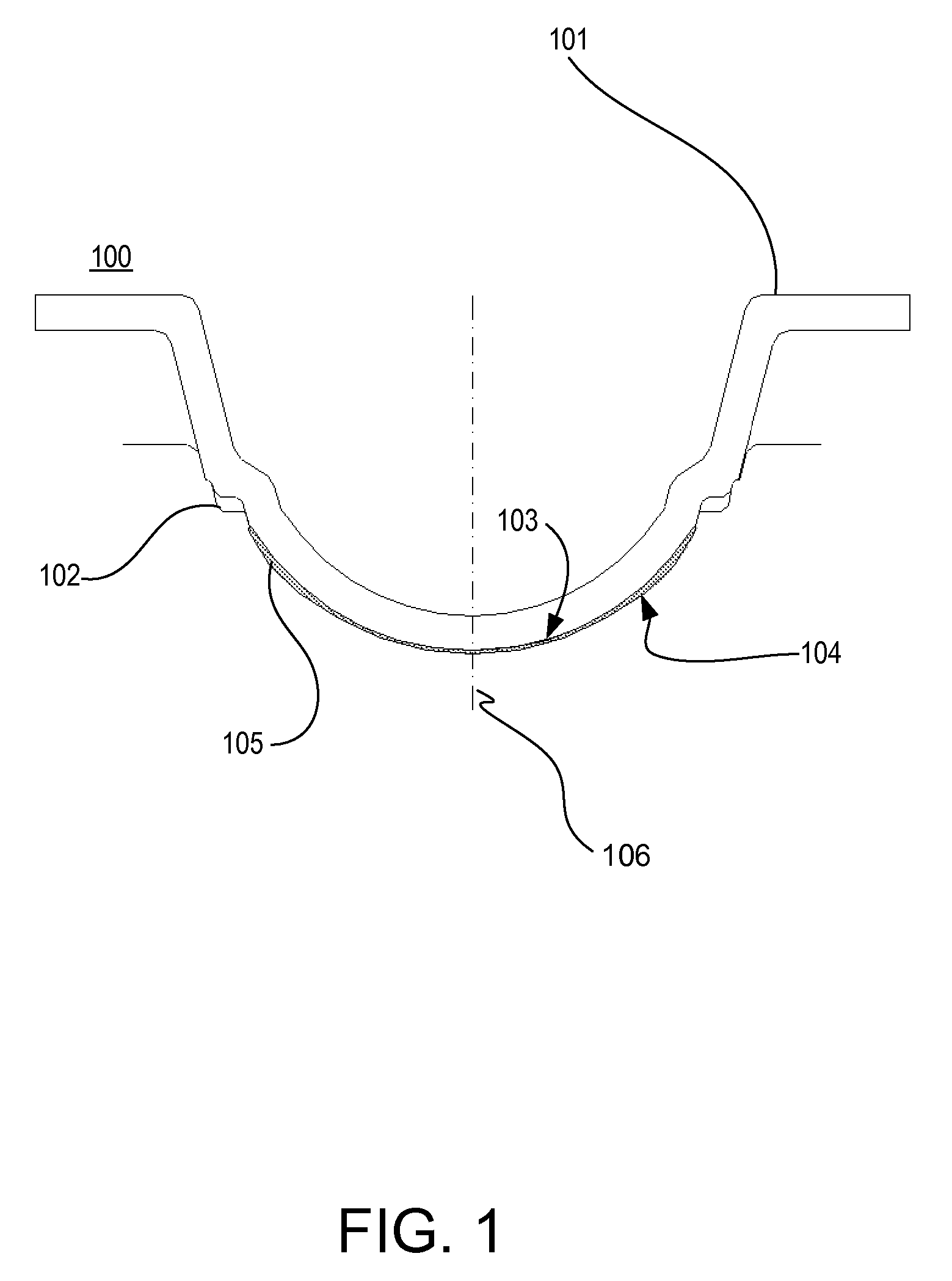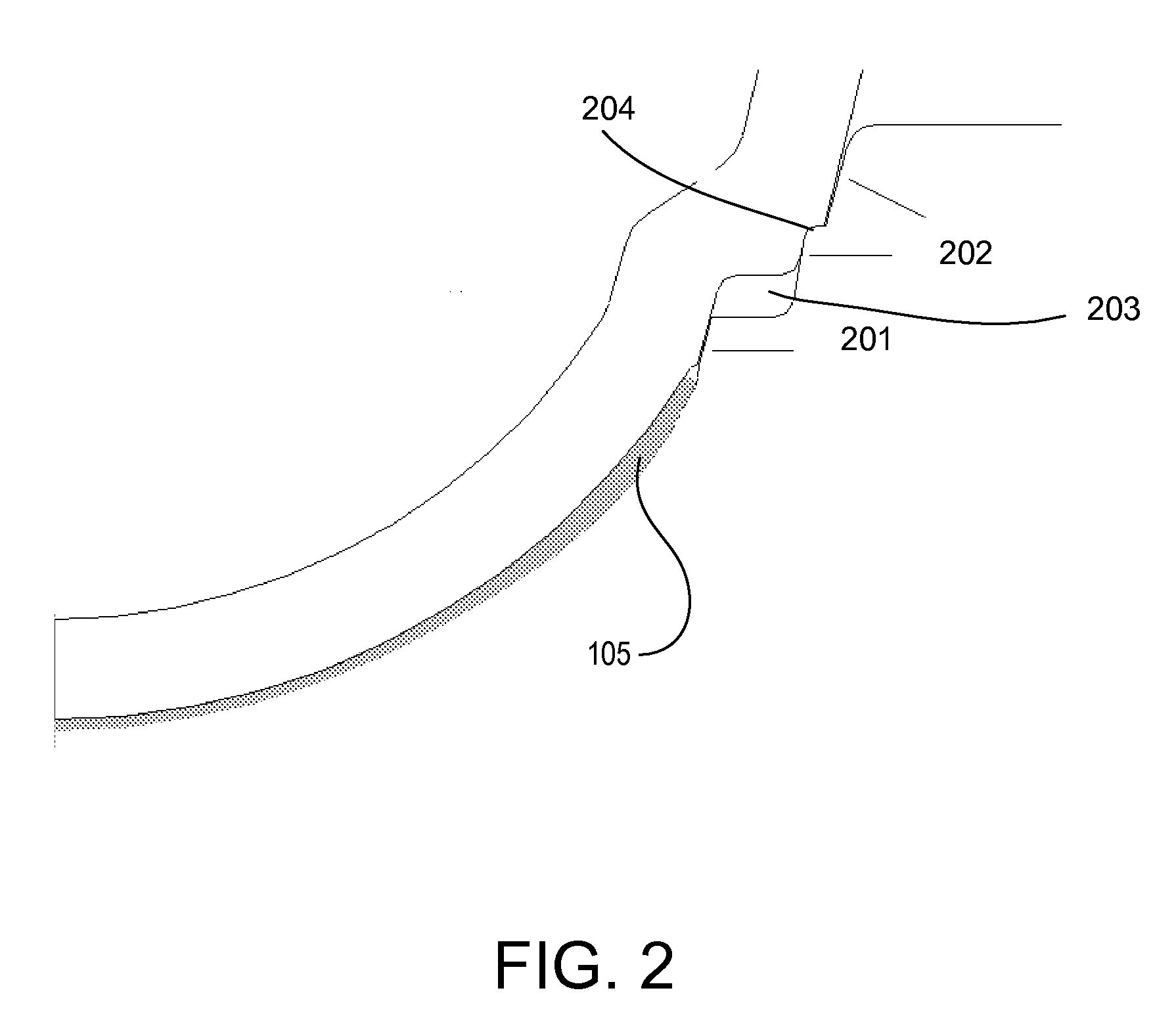Free form ophthalmic lens mold
a free-form, ophthalmic technology, applied in the field of free-form ophthalmic lens molds, can solve problems such as unsuitability for all patients, and achieve the effect of facilitating the use of mold parts
- Summary
- Abstract
- Description
- Claims
- Application Information
AI Technical Summary
Benefits of technology
Problems solved by technology
Method used
Image
Examples
Embodiment Construction
[0015]The present invention relates to the use of a mold assembly capable of molding an ophthalmic lens with a free formed edge. Essentially, a specific amount of lens forming mixture is precision dosed into a first mold part and a second mold part is assembled with the first mold part thereby forming a vent gap and shaping the lens forming mixture into an ophthalmic lens. The vent gap facilitates uniform dispersion of lens forming mixture during assembly of the first mold part to the second mold part.
Definitions
[0016]As used herein, “released from a mold,” means that a lens is either completely separated from the mold, or is only loosely attached so that it can be removed with mild agitation or pushed off with a swab.
[0017]As used herein “lens” or “ophthalmic lens” refers to any ophthalmic device that resides in, on or in close proximity to the eye. These devices can provide optical correction or may be cosmetic. For example, the term lens can refer to a contact lens, intraocular l...
PUM
| Property | Measurement | Unit |
|---|---|---|
| polydispersity | aaaaa | aaaaa |
| polydispersity | aaaaa | aaaaa |
| wavelengths | aaaaa | aaaaa |
Abstract
Description
Claims
Application Information
 Login to View More
Login to View More - R&D
- Intellectual Property
- Life Sciences
- Materials
- Tech Scout
- Unparalleled Data Quality
- Higher Quality Content
- 60% Fewer Hallucinations
Browse by: Latest US Patents, China's latest patents, Technical Efficacy Thesaurus, Application Domain, Technology Topic, Popular Technical Reports.
© 2025 PatSnap. All rights reserved.Legal|Privacy policy|Modern Slavery Act Transparency Statement|Sitemap|About US| Contact US: help@patsnap.com



